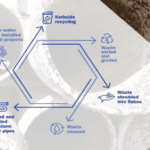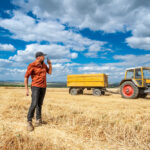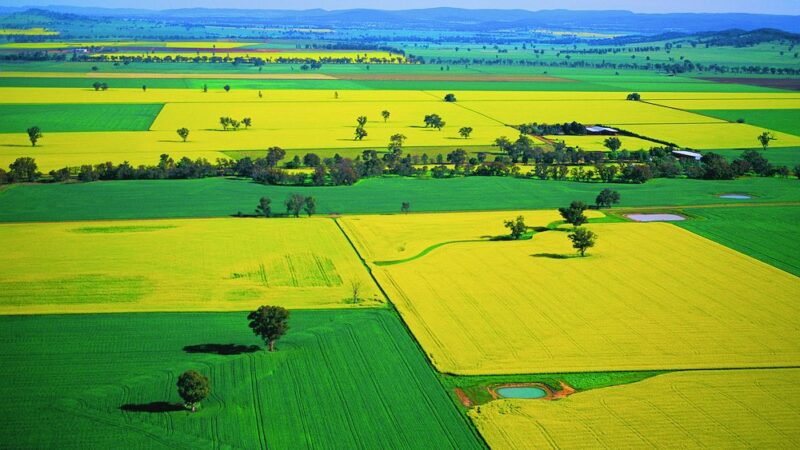The renewable energy hub project by Innovating Energy is possible due to grant assistance under…
By the horns: tackling feral pigs in NSW
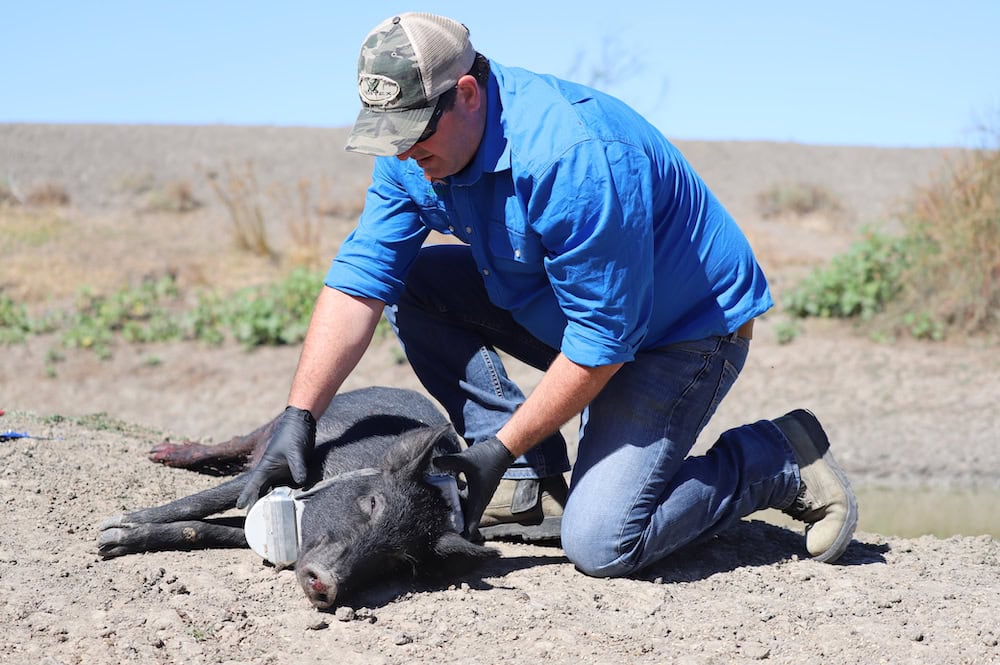
Feral pigs have long wreaked havoc for Australian landholders, despite ongoing efforts to control them. Their environmental impact, ability to pass on disease and steep economic costs through land degradation, crop and pasture loss and livestock predation are showing no signs of abating.
Each year it is estimated that feral pigs cost the $65 billion Australian agricultural sector at least $106.5 million, with the pests now inhabiting 45 per cent of Australia.
Decades-long attempts to reduce their number primarily through shooting and baiting have had patchy results, despite landholders spending around $47.7 million each year trying to root them out.
Feral pigs are wallowers by nature. Not having sweat glands means they like to cool off, and this regular trampling of dams and waterways is where they have a major impact. They also destroy fencing and other infrastructure and can pose significant risks to culturally significant Indigenous sites.

They also carry diseases including brucellosis � which causes reproductive problems in animals � and leptospirosis � a bacteria that can be passed from animals to humans and is commonly found in warm and moist regions.
The as-yet incurable African swine fever can also be carried by wild pigs, and as this viral disease creeps closer to Australia its biosecurity threat rises. Foot and mouth disease is another significant biosecurity threat that can be passed on by feral pigs.
Feral pig expert Darren Marshall is working with NSW Farmers to study pig movements in the Paroo area north of White Cliffs in the state�s north-west. He says to make more than a dent in pig numbers, at least 70 per cent of pig populations must be taken out at the same time.
And he says the best way to achieve this is by landholders working together. In other words, going it alone isn�t going to cut it.
�The difficulty is that pigs breed at a rate second to rabbits, so unless everybody works together on a large scale then the impact of controlling feral pigs is very minimal,� Darren says. �There are a lot of myths and beliefs about where pigs go, where they live and what damage they do.
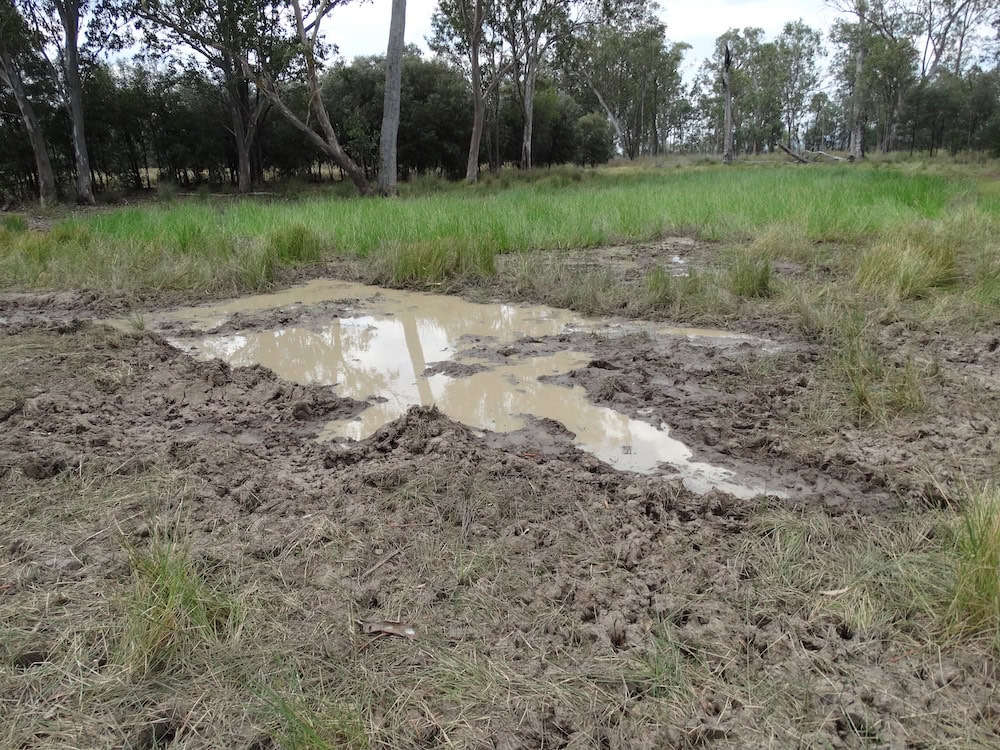
�So, what I do is put a GPS tracking collar on the pigs to dispel those myths, and I can give landholders back that information and they can target their control efforts and hopefully have a better impact to get that 70 per cent they need.�
Feral pig expert Darren Marshall.
Darren is also on the steering group for Australia�s first National Feral Pig Action Plan (NFPAP), which is a $1.4 million federal government initiative being managed by Australian Pork Limited to build cohesion in the way farmers, land managers and agribusinesses work together to deal with pigs.
Professional culling using aerial or ground shooting, baiting, trapping and exclusion fencing are the main methods used to control pigs.
But science is increasingly playing a key role in shaping these strategies.
Satellite mapping data gathered from the GPS collars is used to guide control efforts for maximum impact, so less money is wasted in the process.
NSW Farmers Association Wild Dog Coordinator Bruce Duncan works with farmers to help manage three main vertebrate pests: wild dogs, foxes and feral pigs.
Together he and Darren have collared 30 feral pigs in the Paroo district. These pigs are tracked around the clock and the data is shown to landholders so they can see and better understand pig behaviour.
�Putting a GPS collar on them helps us understand how they use the landscape, where they spend their time and what effects rain and climate have compared to other areas. We want to see what corridors and pathways they use as this all helps with management control.�
NSW Farmers Association Wild Dog Coordinator Bruce Duncan.
�Pigs cause widespread impacts on the environment through the destruction of mound springs and waterways. They are very destructive. When they are on floodplains they like to root up soil in search of food, and then nothing will grow there, and it changes the structure of the soil.
�They are also destructive to livestock such as sheep, they still carry diseases like brucellosis and leptospirosis � but they have a much more visible and tangible physical impact on the environment.�
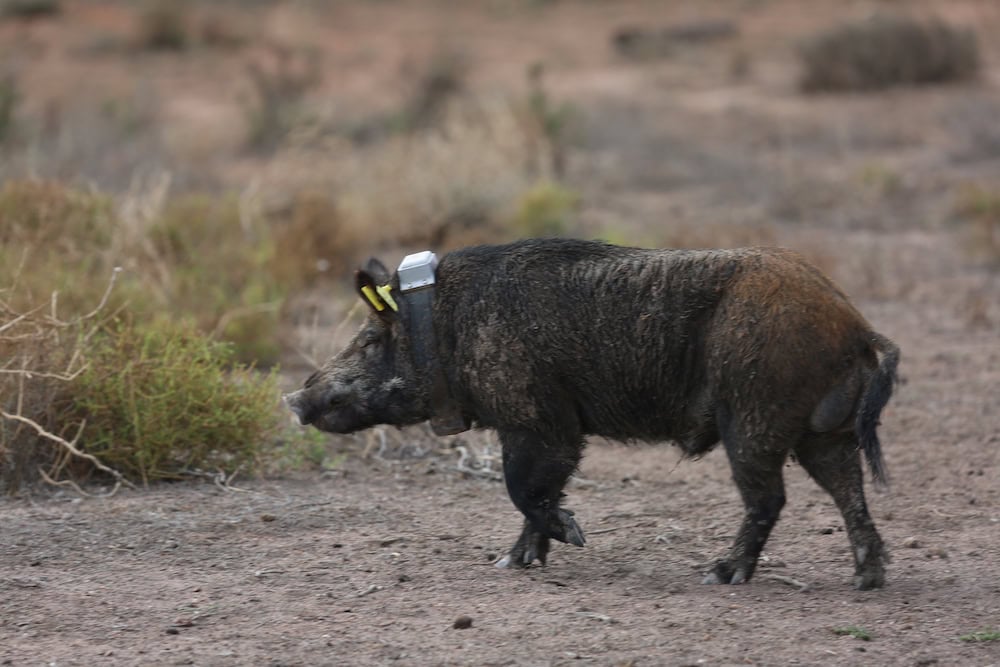
Western NSW grazier Leon Zanker knows all too well the environmental, economic and health impacts of feral pigs.
Leon says the drought was responsible for decimating pig populations, but with recent rain the numbers are beginning to swell.
A high pig population on his farm equates to lamb losses of between 30 and 50 per cent, with vegetation loss the next most significant impact.
�High pig numbers will plough up hundreds of acres of country after rainfall events, and once this is ploughed up it will not grow feed until another big rain event or flood. They are also a carrier of leptospirosis and other diseases and this presents a health risk,� Leon tells The Farmer.
�The most effective strategy is aerial shooting due to the quick knockdown capability, but this is limited by cost unless it is part of a funded program. Baiting is very effective, and shooting is opportunistic. Trapping is effective but is very time consuming, so it�s the least used option. All strategies depend on circumstance.�
During 2020, NFPAP Coordinator Dr Heather Channon gathered input from a diverse array of stakeholders. She is now finalising the plan, which will set a best-practice approach for dealing with pig populations, sharing similar principles to those of the National Wild Dog Action Plan.
Heather says GPS collaring is a significant tool in engaging landholders and assisting them with controlling feral pigs.
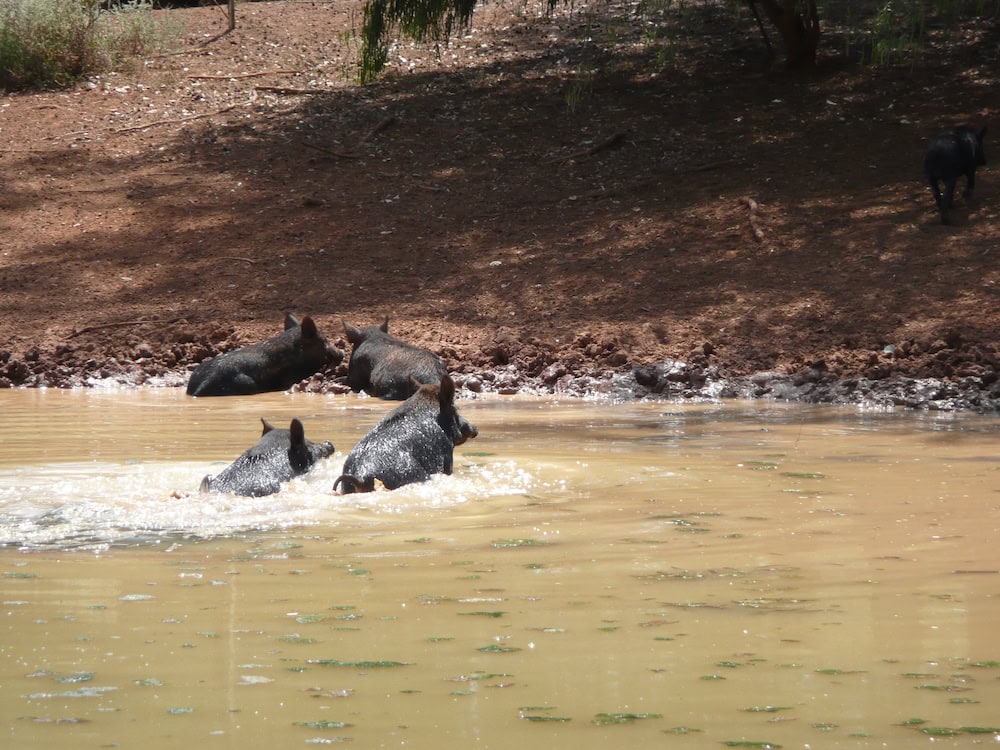
�The GPS collars provide engaging information for landholders at the local level to understand when their pigs are moving, and where they move to at different times of the year. This all helps landholders work together to target feral pig populations and enhance the effectiveness of the control strategies being used.�
NFPAP Coordinator Dr Heather Channon.
She adds that building long-term collaboration and coordination between landholders is one of the key planks of the NFPAP.
�This plan will help keep people engaged over a sustained period about the best way to control pigs. The purpose of the plan and all of the actions and objectives in it are all around supporting people to work together,� Heather says.
At this stage, NFPAP is expected to be finalised by October 2021.
If you enjoyed this feature on feral pigs, you might want to read our story on biosecurity.


